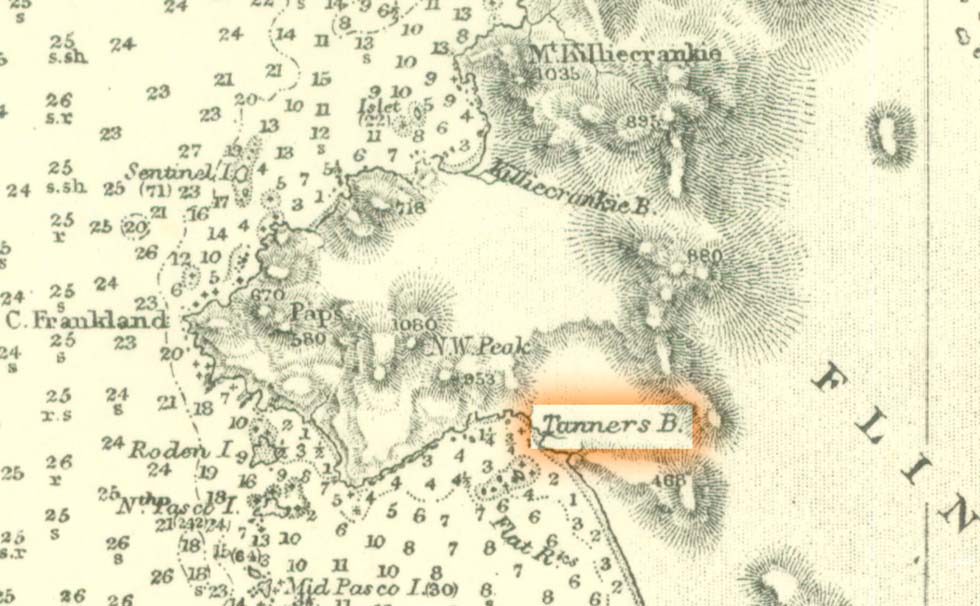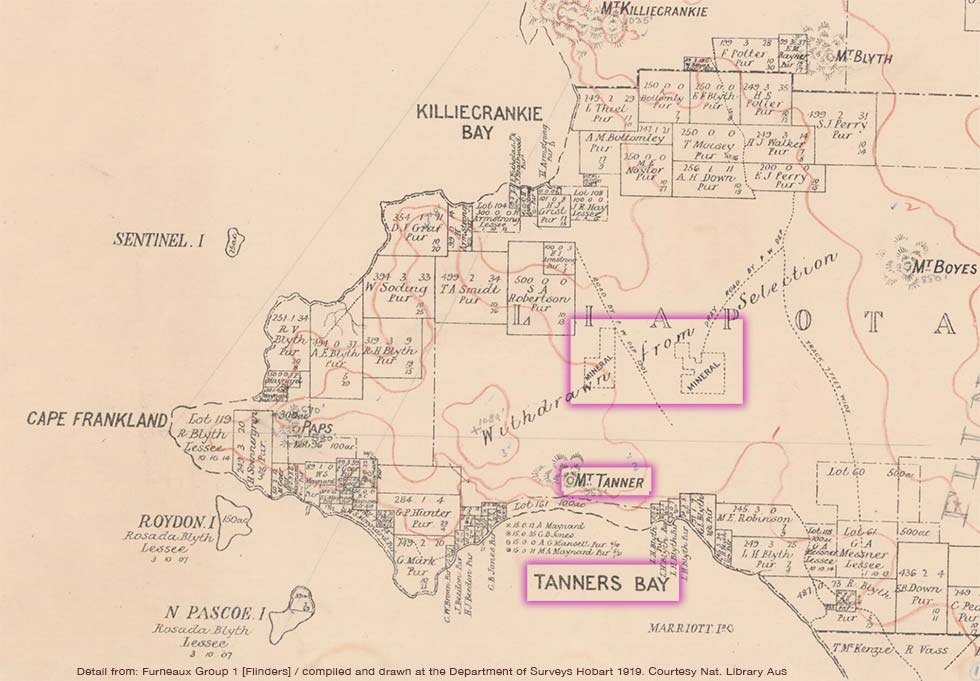
about Tanners Bay ...
The name "Tanners Bay" appears to link back to the mid 1800s when the whole of Flinders Island was leased to a Captain Lang Smith.
As one newspaper article described things in 1937:
Sixty years ago the only residents of Flinders Island were four or five hunters who lived on the proceeds from kangaroo and wallaby skins. Periodically Mr. Gardiner sent out a boat to collect the skins, and these were taken back to Launceston to be treated in a tannery established by him.
The island was overrun by kangaroo and wallaby, and they were easily snared. No roads or tracks connected the different parts of Flinders Island in those days, and as the country was heavily timbered and infested with snakes there was considerable danger in attempting an overland trip.
The sheltered waters of Tanners Bay would have provided a natural loading bay from which to collect the native animal skins harvested in the north of the island.
tin mining arrives ...
Interest in this local area started to firm up in the mid 1880s after a group of tin mining prospectors found significant amounts of alluvial tin around Tanners Bay.
As the Mercury newspaper reported in May 1884
They started for Tanner's Bay where they camped, and on the following day reached the northern portion of the island. There prospecting operations were commenced. Some very good coarse alluvial tin was obtained, the wash going 7oz. to the dish. The geological features of the ground for several thousand acres present every indication of tin-bearing deposits. There is plenty of water to be obtained for washing purposes. There is in this locality a terrace of alluvial tin, which, with skilled management, would give good returns.
The Tanners Bay tinfield was the first mining venture to start up on Flinders Island. Though hampered by lack of water it was still in operation in 1912 when its prospects seemed good if only some investment to solve the water issue was forthcoming.

These mineral discoveries resulted in a large block of ground reserved from selection around Mount Tanner. This shows up clearly on the 1919 survey map of the island.